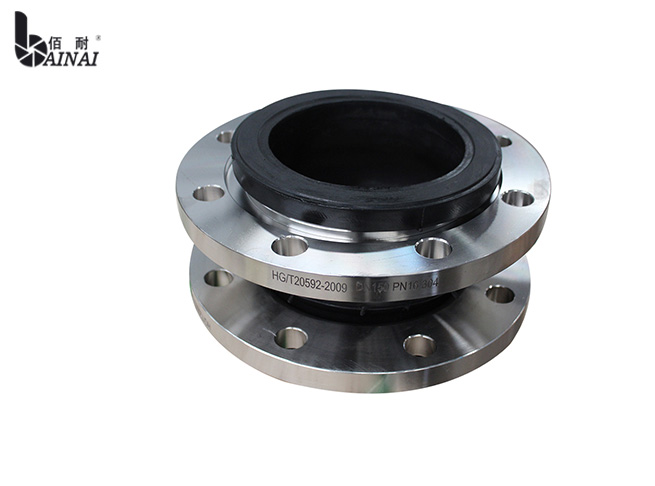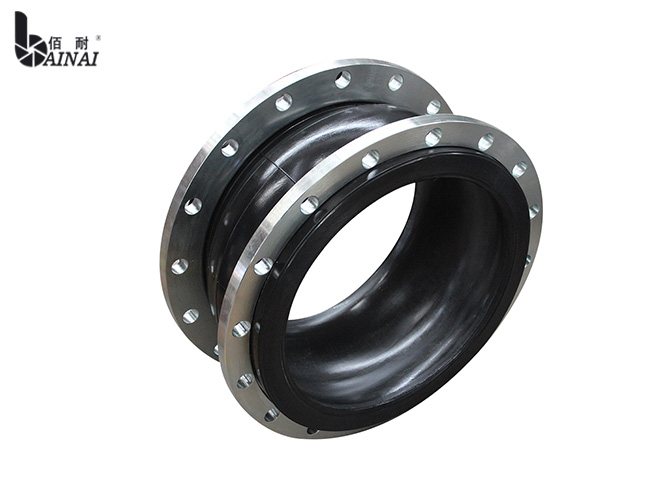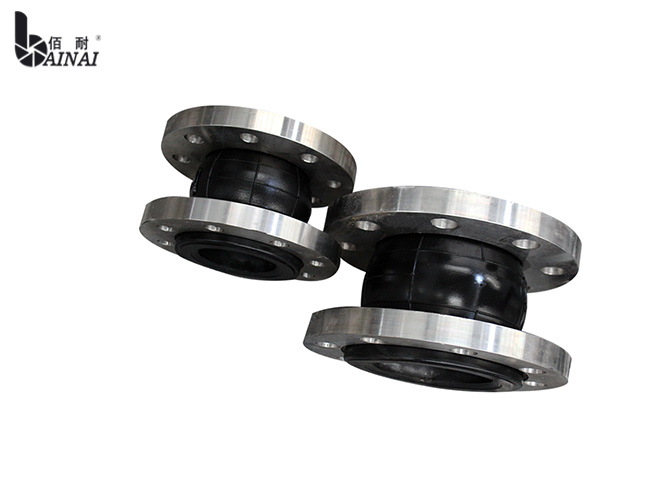




Rubber expansion joint is a flexible connector used in piping systems to absorb movements such as thermal expansion, vibrations, and mechanical displacements. It is primarily composed of rubber, reinforced layers (such as fabric or steel wire), and flanges. These joints are essential for protecting piping systems and equipment from damage caused by dynamic forces.
| Nominal diameter | Length (mm) |
Axial displacement | Horizontal movement (mm) |
Deflection angle (a1+a2) |
Special length (mm) |
||
| mm | Inch | Compression (mm) |
Extension (mm) |
||||
| 32 | 1¼ | 95 | 9 | 6 | 9 | 15° | 130/150/200 |
| 40 | 1½ | 95 | 10 | 6 | 9 | 15° | 130/150/200 |
| 50 | 2 | 105 | 10 | 7 | 10 | 15° | 130/150/200 |
| 65 | 2½ | 115 | 13 | 7 | 11 | 15° | 130/150/200 |
| 80 | 3 | 135 | 15 | 8 | 12 | 15° | 130/150/200 |
| 100 | 4 | 150 | 19 | 10 | 13 | 15° | 130/200 |
| 125 | 5 | 165 | 19 | 12 | 13 | 15° | 130/150/200 |
| 150 | 6 | 180 | 20 | 12 | 14 | 15° | 130/150/200 |
| 200 | 8 | 210 | 25 | 16 | 22 | 15° | 130/150/200 |
| 250 | 10 | 230 | 25 | 16 | 22 | 15° | 130/150/200 |
| 300 | 12 | 245 | 25 | 16 | 22 | 15° | 130/150/200 |
| 350 | 14 | 255 | 25 | 16 | 22 | 15° | 130/150/200 |
| 400 | 16 | 255 | 25 | 16 | 22 | 15° | 130/150/200 |
| 450 | 18 | 255 | 25 | 16 | 22 | 15° | 200 |
| 500 | 20 | 255 | 25 | 16 | 22 | 15° | 200 |
| 600 | 24 | 260 | 25 | 16 | 22 | 15° | 300 |
| 700 | 28 | 260 | 25 | 16 | 22 | 15° | 300 |
| 800 | 32 | 260 | 25 | 16 | 22 | 15° | 300 |
| 900 | 36 | 260 | 25 | 16 | 22 | 15° | 300 |
| 1000 | 40 | 260 | 26 | 18 | 24 | 15° | 300 |
| 1200 | 48 | 260 | 26 | 18 | 24 | 15° | 300 |
1.Excellent Flexibility: The rubber material provides high flexibility, allowing the joint to absorb axial, lateral, and angular movements effectively.
2.Vibration and Noise Reduction: It helps in reducing vibrations and noise within the piping system.
3.Corrosion Resistance: Rubber has good resistance to acids, alkalis, and chemical corrosion, making it suitable for various media.
4.Easy Installation: Lightweight and simple to install, with low maintenance requirements.
Rubber expansion joints are widely used in industries such as water supply, wastewater, HVAC, petrochemical, shipbuilding, and fire protection. They are used to compensate for pipe movements, reduce noise and vibration, and enhance the stability and lifespan of the piping system.